Note: I’ve just placed the sketches in order, in the gallery below. The order is important if you want to follow along with the experiment. I was working with photos of fair goers from @earthsworld.
Early in April I saw an ad for the Sennelier Ink Brush Pen. They look like the Pentel ColorBrush. They look like a water brush filled with color.
Note: I purchased my pens and am not connected to the company at all.
I decided to try them because I love brush pens. But I was also intrigued because the pens have pigmented ink in them. With luck that means they are lightfast—I say with luck, because I have only recently purchased them and have not tested lightfastness. I have no additional information. In the past other companies have come out with products claiming lightfastness and it hasn’t worked out—we’ll just have to wait and see.
I’m OK with that. The primary purpose I ask a brush pen to serve is “fun to sketch with.”
These definitely are fun to sketch with.
Unlike the Speedball Watercolor Brush Pens you saw me use in the early 2000s and 2010s the ink in the Sennelier Ink Brush Pen actually rewets nicely—much like the dye-based inks of the Pentel Color Brushes. So if you like that tool you’ll probably enjoy working with these.
I’ve done a number of warm up sessions with these brushes and some sketches I’m really fond of. Today I have a gallery of a quick sketch session using the pens I purchased (Burnt Sienna, Orange, Ultramarine Blue, and Payne’s Gray).
Cavet: I’ve only used these in the studio where they sat horizontally on my table or tip up in a pen holder. Even so, without any jostling I have found that ink from the tip collects in the cap—so be very careful when opening them if you’re worried about splatters and stains. And I recommend, based on this, that you only carry them in your pocket or purse, cap-tip up. A pencil case to protect them from being squeezed by the other contents of the pocket or purse would probably be nice. BUT I should add the other thing I’ve found is the body is not as easily squeezed as the Pentel squeeze-bodied pens, so that might not be an issue—just definitely tip up!
You can click through the quick sketch gallery below to see the types of marks I experimented with and was able to make. All 8 sketches were executed in almost exactly one hour. I was not trying for blending or mixing in these sketches. I was looking for mark making and for color strength and saturation which would give me contrast of course. In later pieces I’ll be posting you’ll see blending.
I found the color selection limited. There are other colors I might try if I’m still interested when I run through my current selection. In general I found the Ultramarine blue more cerulean in color and strength. I really enjoyed the orange.
I was working on folded sheets of Blick Sulphite which were folded into a booklet that was about 9 x 12 inches. Each drawing occupies a 9 x 12 inch page. I didn’t draw on the back of these sheets for this experiment. On thinner paper you’ll have show through of ink, as you would with any similar product
I’ve used these pens on various drawing and watercolor papers and had no bleed through yet, either used straight from the pen, or after wetting the strokes to blend on the page. I encourage you to do a quick paper test first as you’ll probably be using a different variety of papers. I am excited to keep playing with this tool.
The first drawing is a woman looking down, sketched with Payne’s Gray, and yes, I realize there is a huge writo on that page. And it doesn’t bother me at all.



















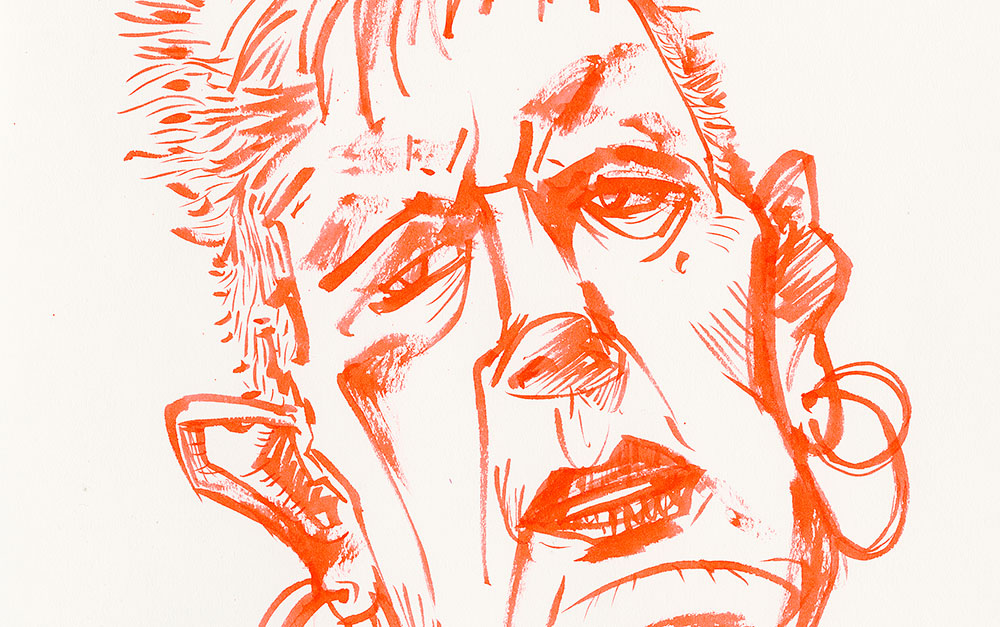
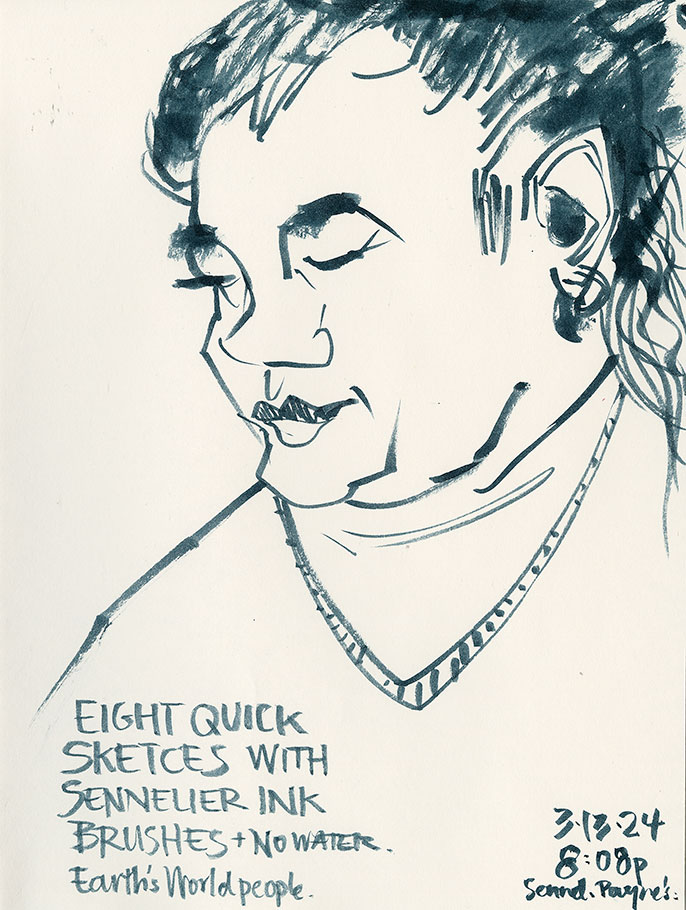
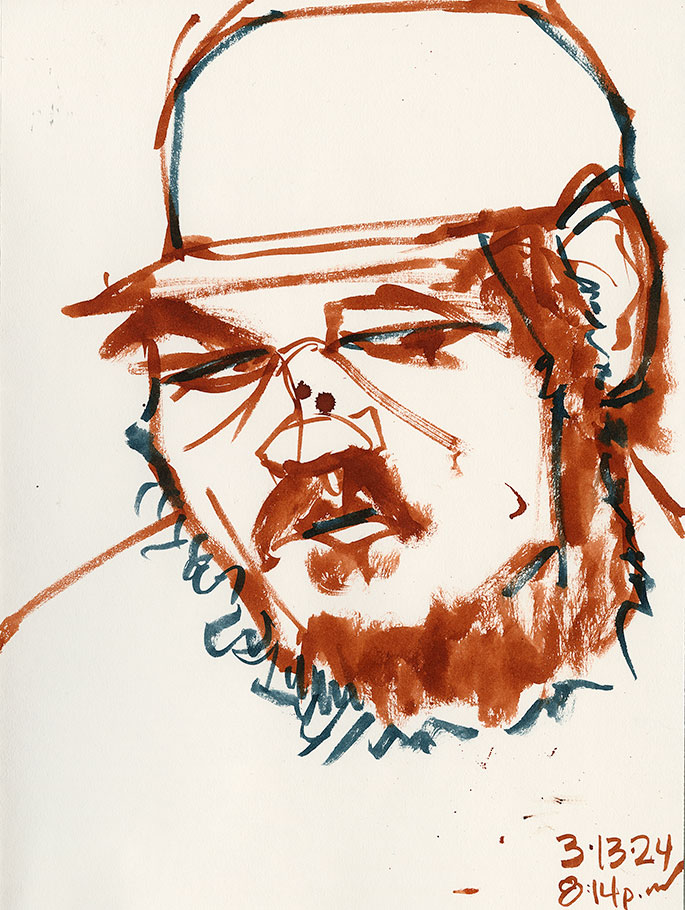
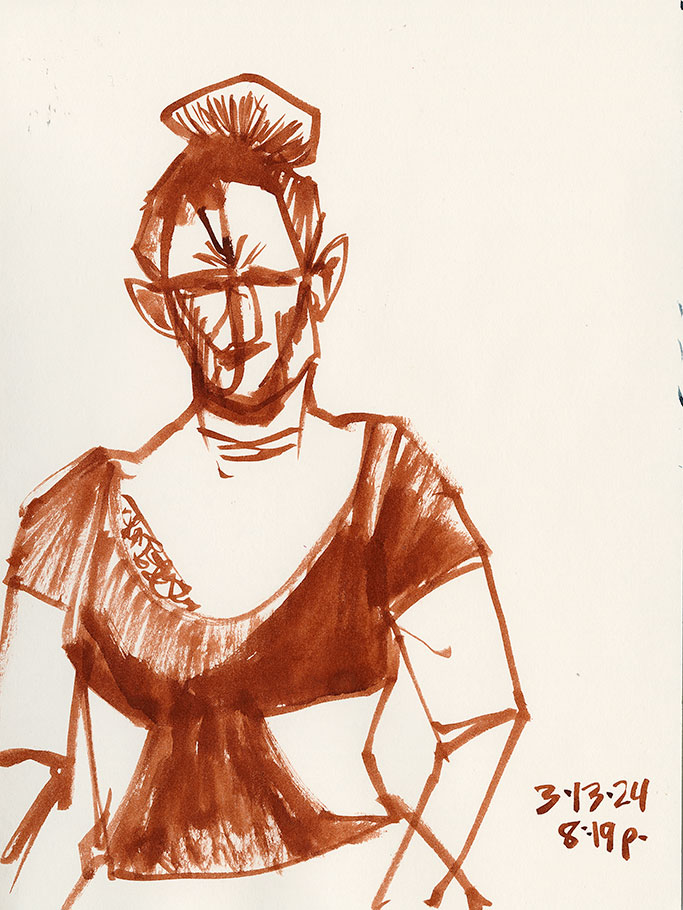
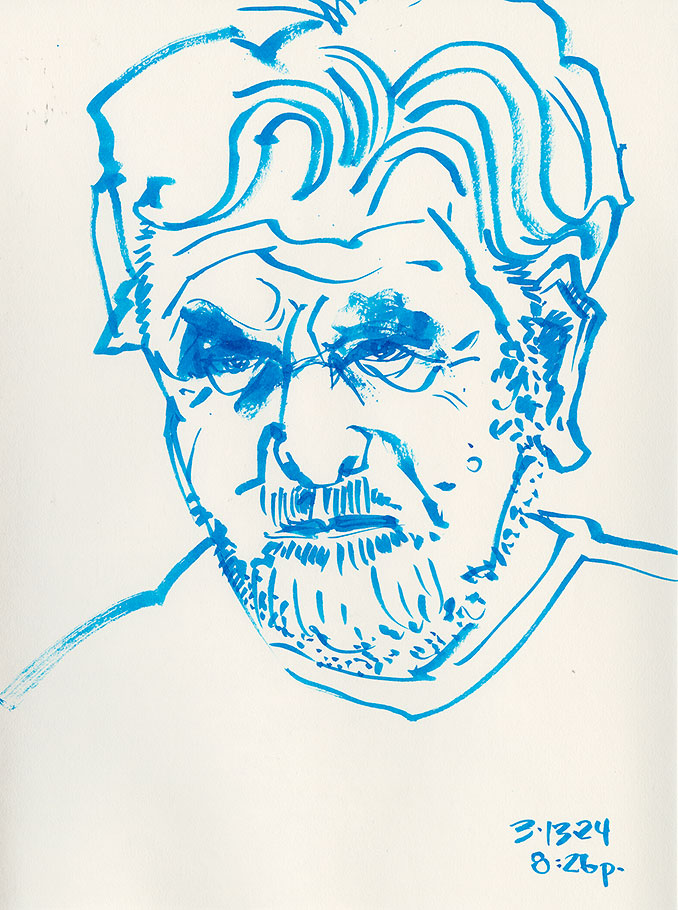
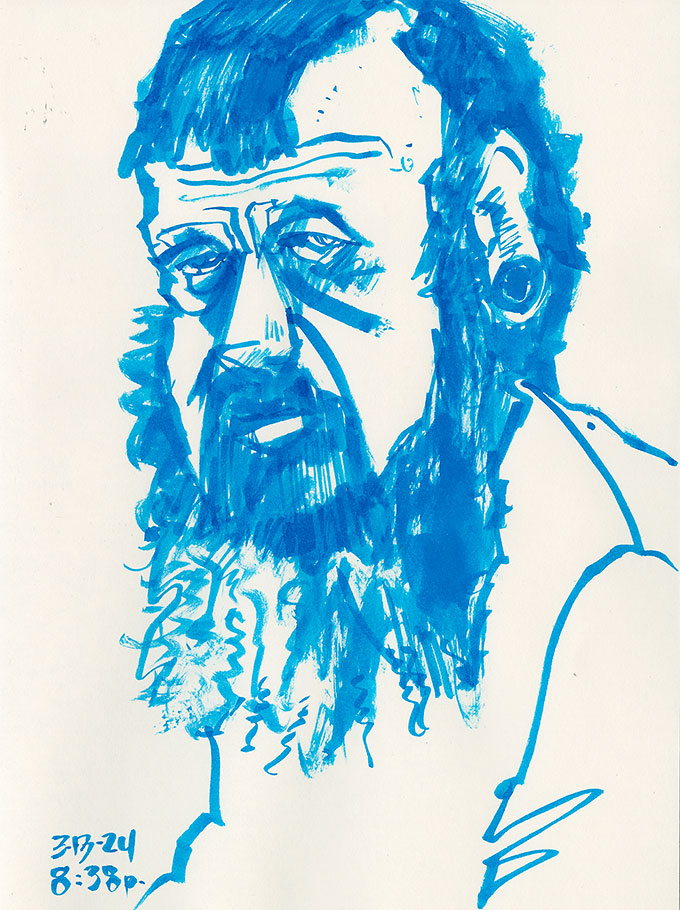
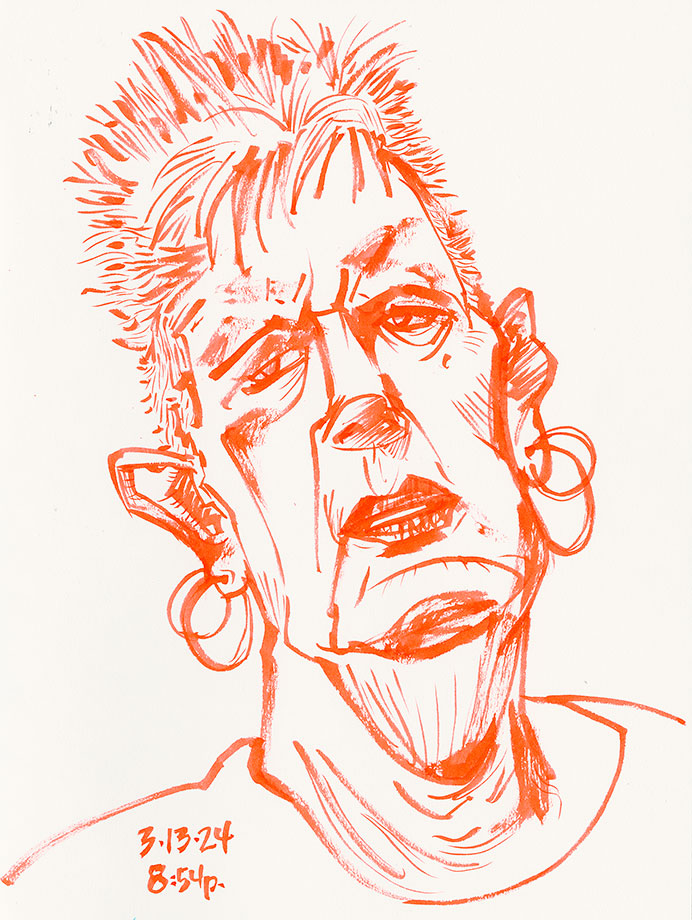
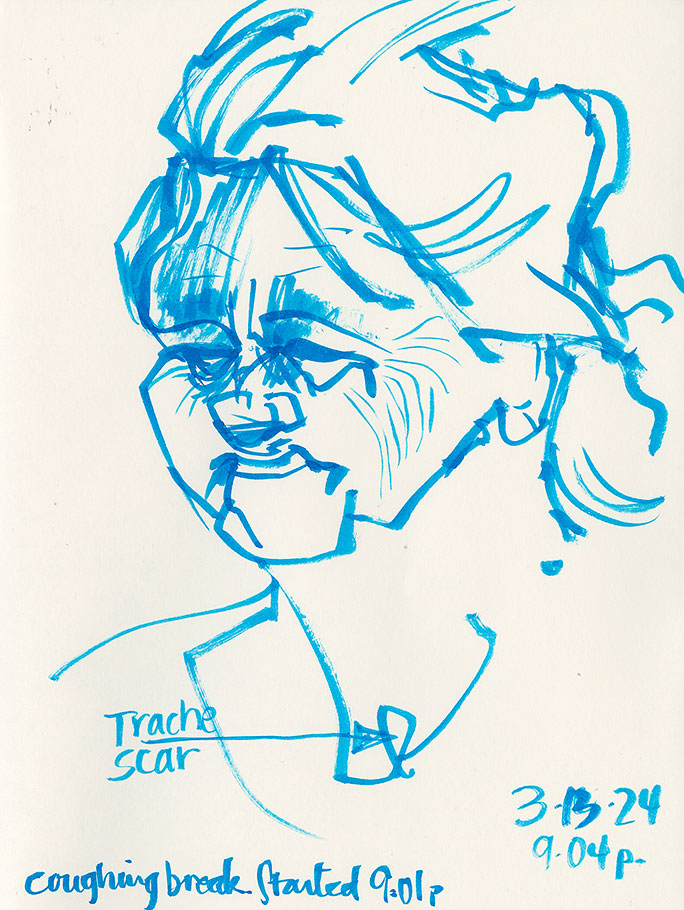
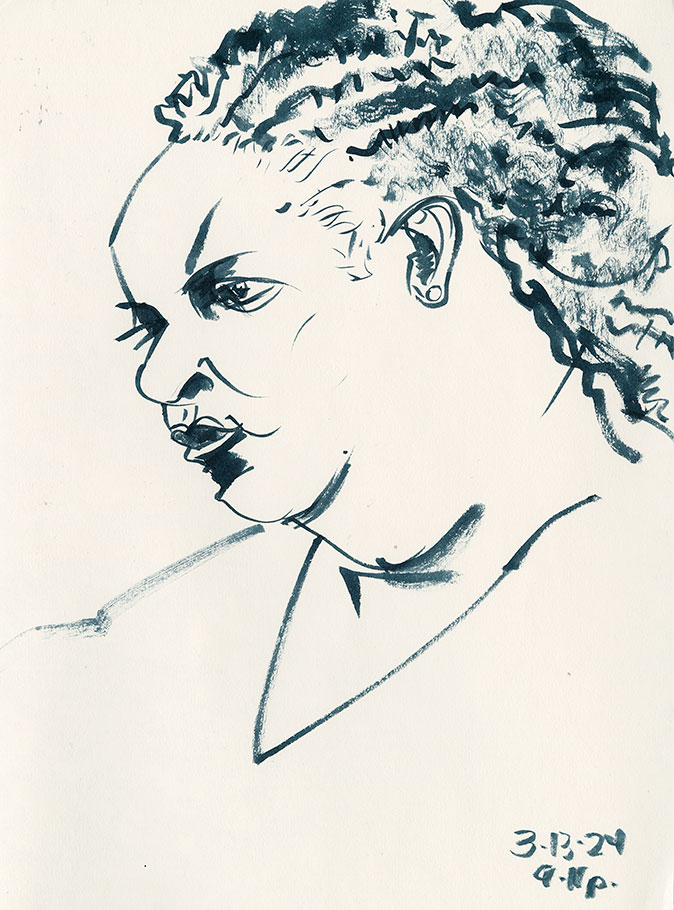
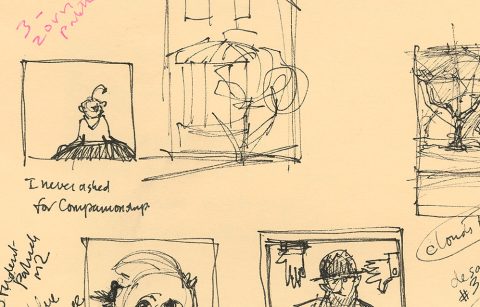
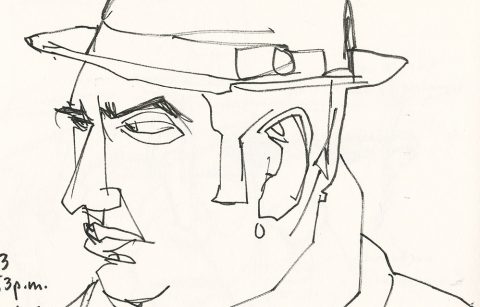
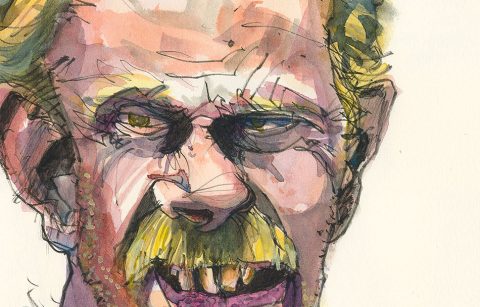
I don’t like these because the caps are so dang hard to pull off!
I haven’t found them to be a problem so far, but they are more difficult to remove than brands like the Pentel brush pens with squeezy bodies. The latter have the nice ridges on their caps. These make it easier to grasp the cap.
My issue with the caps is that they are more streamlined, smaller, and CLEAR. They are therefore pretty invisible if dropped on any surface and would be more of a hazard when sketching out. (A brush pen without a cap has to be tossed, I don’t have a way to transport that.) I have a routine for handling caps when I’m out sketching (they automatically go into a particular pocket), because I don’t want to inadvertently drop a cap near any animals I’m sketching (swallow hazard). Even so I don’t know that I’d be comfortable taking these brushes to zoos and farms for this reason.
What was weight of the Blick Sulphite paper?
Harriet I have both 60 and 80 lb paper of this type. Unfortunately I only have one unpacked and without the other to compare it I don’t know which one I used for certain. I suspect I was working on the 80 lb. I can tell you I’ve worked with all sorts of media on the 60 lb. too.
But if you’re going to get some paper for most of your experimentations I’d go with 80 lb just to have the most range.
You could also go into Patreon and watch that video where I make the pamphlet and do all the face doodles. That was the same weight paper as this, from the same ream. And I’m pretty sure I mentioned what weight it was in that video.